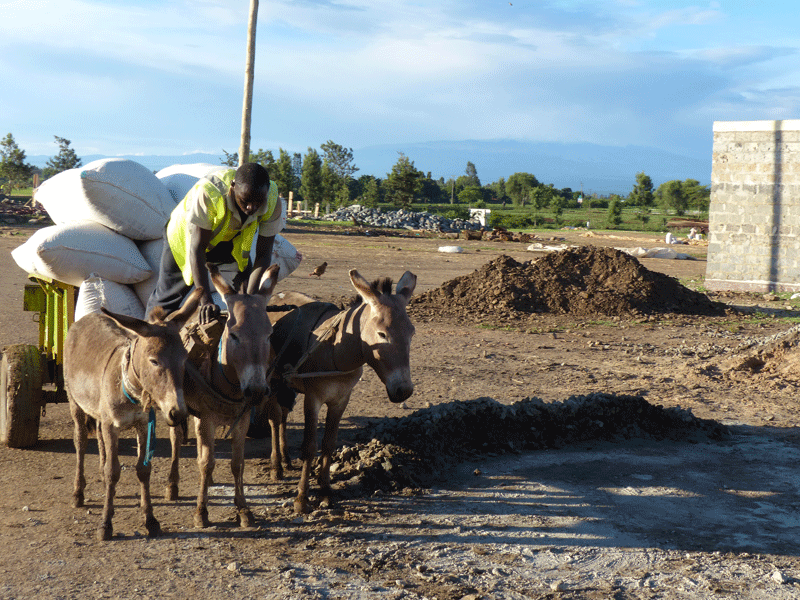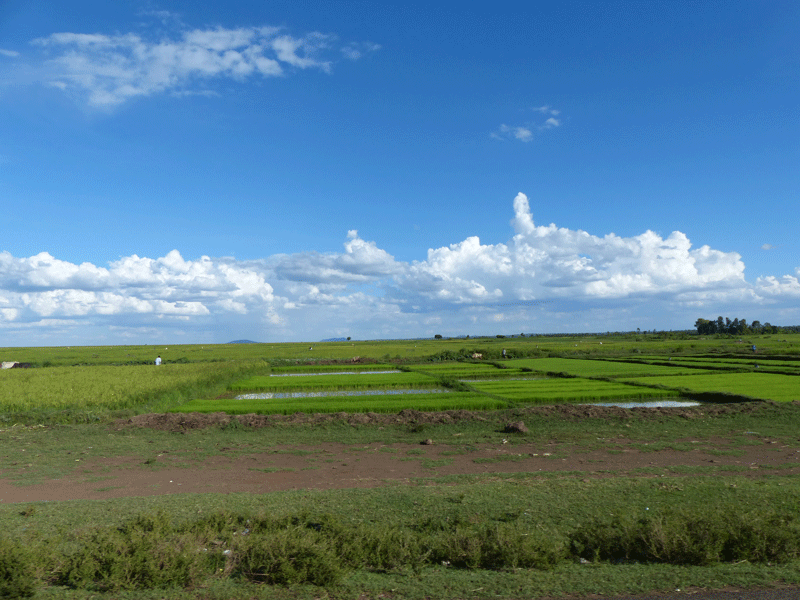Climate change and food security
PART 3 – EXPOSURE-4-DEVELOPMENT TOUR
climate change is affecting global weather patterns and influencing agricultural practices around the world. In Sub-Saharan Africa, there is a fine line between food and famine, and incremental changes can have devastating effects. In the drought of 2009, an estimated 10-million people faced starvation in Kenya.
“Right now climate change impact is a major concern,” says Booker Owour, general manager of the Kenya Small Scale Cereal Growers Association. “Small scale farmers are trying to improve food security in this country, but it is a gamble because the weather bedevils our production, inputs are inaccessible, we have limited access to storage facilities and market access is a challenge.”
Farmers in Kenya and throughout Sub-Saharan Africa are particularly vulnerable to the effects of climate change and variability because of their dependence on rain-fed agriculture. Currently, less than five percent of crops in Kenya are grown under irrigation. To make matters more volatile, recent expansion of cultivation into marginal growing regions in the country is increasing the risk for producers.

Eighty percent of the land in Kenya is arid or semi-arid – land better suited to seasonal livestock grazing than cultivation. Under most climate change models, these lands are expected to get warmer and dryer. Even in the moisture-rich Highlands and Rift Valley, where models predict more moisture and higher temperatures, historic weather patterns are shifting, causing havoc with planting schedules and inputs.
Touring farms near Nakuru, in the Rift Valley, everyone is waiting for the rains to stop so they can harvest. This year the “short rains” have been abnormally heavy.
“Right now there’s too much rain,” says local farmer and extension officer, Richard Moruthi, surrounded by the darkening leaves of his maize crop. “We had a heavy hail storm that damaged the leaves, but didn’t affect production. Now, we’re just waiting for rain to stop so we can harvest.”
Down the road, Philip Gitata is also waiting for a break in the weather to get his wheat off the field. The crop was ready two weeks ago, but between the rains and trying to coordinate the contract harvester, it is still standing.
managing risks
The consequences of failed crops are high for farmers, the people they feed, and the national government. According to Kenya’s National Climate Change Response Strategy, increased drought pressure has shortened the country’s famine cycles from 20 years (1964-1984), to 12 years (1984-1996), to two years (2004-2006) and to yearly (2007/2008/2009). Between 2005 and 2010, the government distributed 528,341.77 metric tonnes of imported food worth Ksh. 20 billion (over $230 million CAD), feeding a population between 3.5 and 4.5 million people per year.
The Climate Change Response Strategy calls for improved education and extension services to help farmers implement conservation agriculture practices, emphasis on crop diversification, and significant investment in irrigation infrastructure and water harvesting. Despite the best intentions, the last national budget saw cuts to extension services, and lower than expected investment in irrigation.
“Until we get things right and set up irrigation infrastructure, the food importation deficit will keep up,” says Owour, who believes that Kenya has the ability to feed its people with the right investments in governance and infrastructure.
In the meantime, farmers are trying to manage their own risks. Production insurance schemes tend to be too expensive for Kenya’s smallholder farmers, but a new product is now available to help recover the costs of their inputs.
Weather-index insurance uses remote weather stations to monitor weather-related risks including drought and excess rain. A payment is triggered whenever rainfall or the temperature is so high or so low that it is likely to cause decreased crop yields, or whenever droughts, frost, or high humidity cross specific thresholds that predict income loss.
PHOTO: THE MWEA IRRIGATION SCHEME COVERS 24,000 HA IN KIRINYAGA COUNTY, IN THE 2012 BUDGET, THE KENYAN GOVERNMENT COMMITTED KSH, 8,000,000 ($92 MILLION CAD) TO IRRIGATION PROJECTS

conservation agriculture and diversification
With weather patterns changing, and models predicting increased warming, farmers need to adapt to the new reality. Several projects are underway in Kenya and across East Africa to promote the adoption of conservation agriculture by smallholder farmers.
Organizations from around the world and local NGOs have been promoting principles of soil conservation, with a focus on minimum and zero tillage systems to reduce fossil fuel use; residue retention and reduced burning of crop residues; and sensor based and site-specific Nitrogen fertilizer application.
There has also been a drive to diversify food crops to reduce reliance on drought-vulnerable crops like maize and wheat to improve food security.
“Some farmers have realized that instead of maize they can produce other crops – sorghum, cassava, sweet potatoes, legumes, millet, amaranth – these crops are being neglected,” says Owour. “The problem is that we tell farmers to diversify their productions, but there is no consumer market to buy these products. We need to tell everyone that you can’t rely on one food.”
It has been a challenge to get farmers to adopt conservation practices or diversify crops, largely because smallholder farmers are among the poorest and most vulnerable populations in Kenya. Just like Canada, a farmer who can’t pay the bills is less inclined to change their practice.
With the population of Kenya growing at an estimated one million people per year, developing and implementing affordable grass-roots adaptive strategies is absolutely critical. There are no easy solutions, but by educating farmers and having the right infrastructure in place, Kenyans can help mitigate what they can’t control – the weather. •







